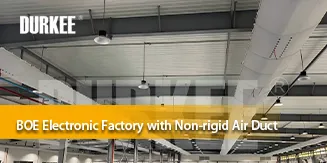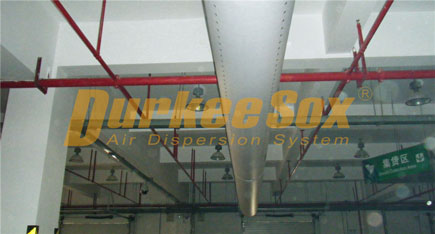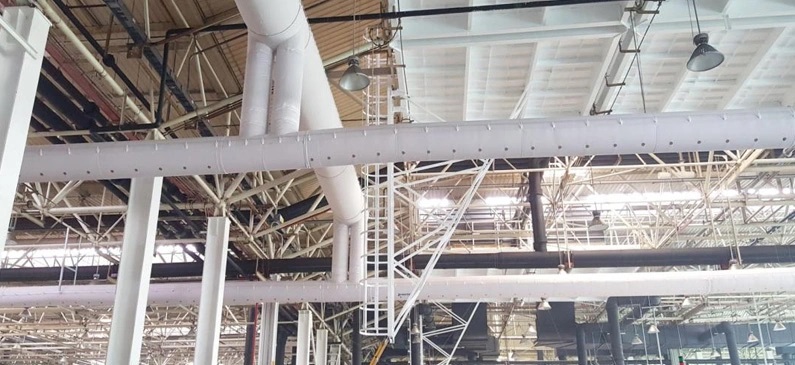 BOE Vietnam Factory: Non-rigid Air Duct Solutions for Electronic Industry
BOE Vietnam Factory: Non-rigid Air Duct Solutions for Electronic Industry
 Why Fabric Air Ducts Are the Preferred Choice for Ventilation in Large Spaces
Why Fabric Air Ducts Are the Preferred Choice for Ventilation in Large Spaces
 The Difference Between Non-Rigid Air Ducts and Rigid Ductwork
The Difference Between Non-Rigid Air Ducts and Rigid Ductwork
1. Porous air outlet mode. It is in the air outlet mode that the air volume is delivered to the ventilation area from a row of orifices. The wind speed of this mode is about 0.3~0.8m/s; the characteristics are that the orifices are arranged in a row orderly with the same diameter as single-row orifices, the air diffuser covers a wide range, and the airflow is uniform. It is mainly used in supermarkets, production workshops, food workshops, logistics, storage, and so on.
2. Large orifice air outflow mode. It is in the air outlet mode that the air volume is transmitted from the large-scale orifice to the textile ducting ventilation area. The wind speed of this mode is about 0.5~1.5m/s, characterized by a large orifice diameter (diameter above φ 40mm) and large air supply volume. It is mainly used for air diffusing in the workshop.
3. Outlet air mode. It is in the air duct diffuser mode that the air volume is transmitted from multiple outlets to the ventilation area. The wind speed of this mode is about 0.3~0.8m/s, characterized by small and the same orifice diameter (diameter under φ 30mm), large number, and uniform airflow. It is mainly used in places with large air volume, small space, and high air exchange rates, such as greenhouses and so on.
4. Jet air outlet mode. It is the air diffuse mode that the air volume is delivered from the nozzle to the ventilation area. The wind speed of this mode is about 0.8~2m/s, which is characterized by high wind speed and long air supply distance. It is mainly used in large workshops and other places.
5. Mesh air flow out mode. It refers to the air supply mode which the air volume is sent to the ventilation area by the long grid. The wind speed of this mode is about 0.2~0.3m/s, characterized by low air velocity, specific wind direction, and uniform airflow. It is mainly used in swimming pools and other places with anti-condensation design.
6. Permeate air outlet mode. It refers to the air supply mode in which all air volume penetrates from the fiber fabric surface is sent to the ventilation area. The wind speed of this mode is slower than 0.2m/s, characterized by low wind speed, uniform airflow, and a small temperature gradient. It is mainly used in cold storage, fruit cold storage workshops, electronic workshops, and other places.
As one of the leading fabric duct suppliers, Durkduct has been insisting on the manufacturing and innovation of our products. If you are interested, please let us know.